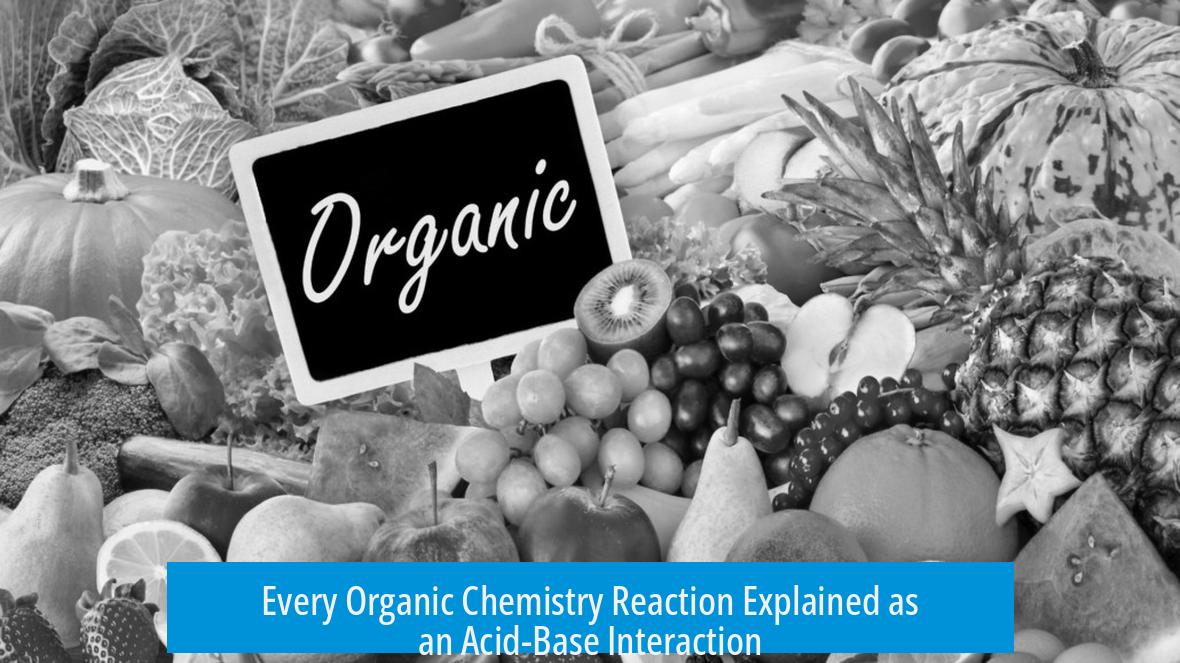Every Organic Reaction Is Basically an Acid-Base Reaction: Understanding the Claim

Organic reactions can largely be understood as acid-base reactions when approached through the Lewis acid-base concept. Electrophiles serve as Lewis acids (electron pair acceptors), and nucleophiles act as Lewis bases (electron pair donors). This framework offers a broad, useful view of many reaction mechanisms in organic chemistry.
Acid-Base Theories in Organic Chemistry
Bronsted-Lowry vs Lewis Definitions
The Bronsted-Lowry acid-base theory defines acids as proton donors and bases as proton acceptors. This definition explains many reactions but is limited to proton transfer processes. It does not cover all organic reactions.
In contrast, the Lewis acid-base definition extends the theory to include electron pair exchanges. Lewis acids are electron pair acceptors; Lewis bases donate electron pairs. This concept captures a wider variety of reactions, including many involving electrophiles and nucleophiles.
- Electrophiles (electron-poor species) are Lewis acids.
- Nucleophiles (electron-rich species) are Lewis bases.
This broad approach aligns with the professor’s claim, explaining how many reactions proceed through interactions of electrophilic and nucleophilic sites.
The Role of Lewis Acids and Bases
In organic mechanisms, nucleophiles attack electrophiles to form new bonds. This can be seen as a Lewis base donating an electron pair to a Lewis acid. Many classic organic reactions, such as nucleophilic substitutions, additions, and eliminations, fit this model well.
Why the Statement Is a Pedagogical Simplification
The professor’s assertion is a teaching tool to simplify complex mechanisms. It helps students grasp the driving forces behind organic reactions early in their studies.
However, it is not universally accurate. Some reaction types fall outside this framework. The acid-base view serves as an introductory scaffold rather than the full picture.
Later courses complicate this view by introducing other mechanistic models. As students progress, they learn exceptions and alternative perspectives.
Exceptions to the Acid-Base Framework
Radical Reactions
Radical reactions involve unpaired electrons rather than electron pairs. Two radicals may combine through single electron interactions, which do not qualify as Lewis acid-base processes.
Radical species neither donate nor accept electron pairs in the Lewis acid-base sense. Hence, radical reactions represent a distinct mechanistic pathway.
Pericyclic Reactions
Pericyclic reactions proceed via concerted cyclic electron rearrangements without clear nucleophile-electrophile interactions. Examples include electrocyclizations and sigmatropic shifts.
While some pericyclic reactions like the Diels-Alder cycloaddition show aspects of Lewis acid-base interaction, many do not fit this model.
Catalytic Reactions and Other Complex Mechanisms
Catalytic processes, such as polymerization catalysis or transition-metal mediated transformations, can involve more complex steps. They may not always be rationalized solely as acid-base interactions.
Some catalysts act through electron transfer, surface interactions, or radical mechanisms, challenging a simple acid-base classification.
Broader Chemical Themes Connected to Acid-Base Reactions
The claim that all reactions are acid-base parallels the idea that all reactions are redox reactions. While redox (electron transfer) occurs in many transformations, this too is a simplification.
Both acid-base and redox frameworks provide unifying lenses but have limitations when applied indiscriminately. Science often employs models that work largely but require adjustments for exceptions.
Practical Implications for Organic Chemistry Students
Viewing reactions as acid-base processes helps assign roles to molecules. It clarifies why a nucleophile attacks an electrophile and why charge distributions direct reactivity.
- Mechanistic arrows often depict electron pair movement from Lewis bases to Lewis acids.
- Understanding electrophilicity and nucleophilicity improves prediction of reaction outcomes.
As students advance, they learn to recognize when acid-base reasoning is insufficient and when alternative mechanisms apply.
Summary: Key Points on Acid-Base Reactions in Organic Chemistry
- The professor’s statement is essentially true within Lewis acid-base theory.
- Electrophiles and nucleophiles function as Lewis acids and bases.
- Bronsted-Lowry theory is limited to proton transfer and doesn’t cover all reactions.
- Radical and many pericyclic reactions do not fit traditional acid-base frameworks.
- Catalytic mechanisms often involve steps beyond acid-base interactions.
- The acid-base view is a useful educational tool, not an absolute rule.
- Advanced courses introduce more nuanced mechanistic concepts.





Leave a Comment